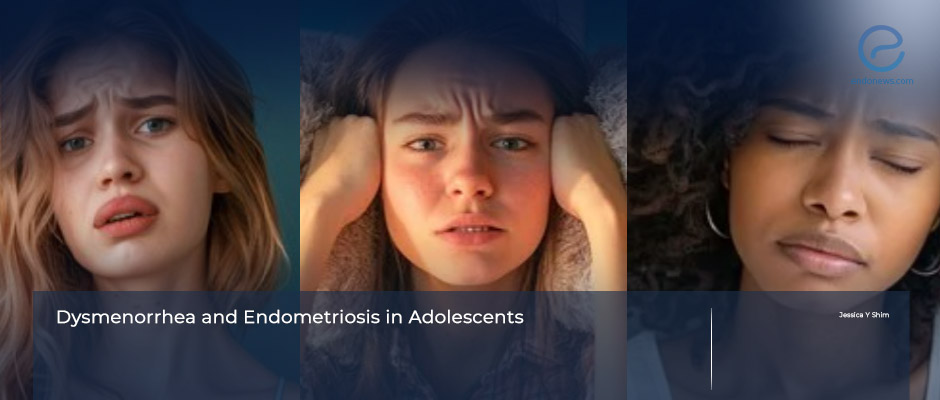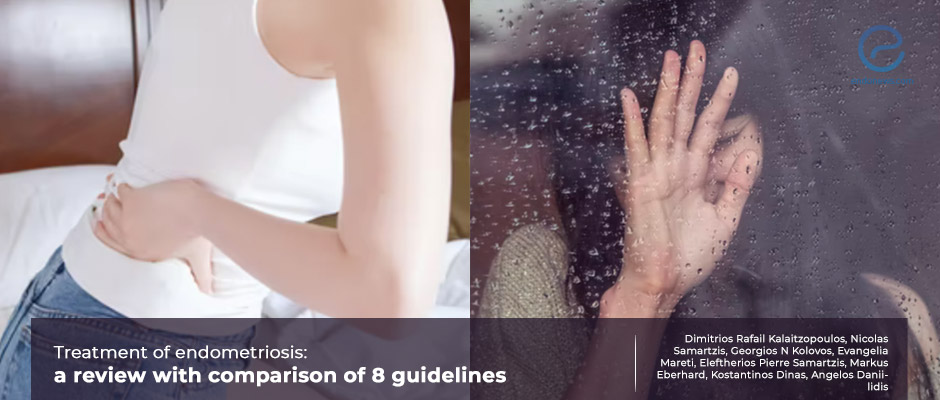Endometriosis in Adolescents: Diagnosis, Treatment, and Challenges
Endometriosis is a condition that affects not only adult women but also adolescents, regardless of their race, ethnicity, or socioeconomic status. It can cause significant pain, including dysmenorrhea and pelvic pain. Research has shown that up to 20% of transgender…
Key Points Lay SummaryEarly use of hormonal contraceptives and the probability of endometriosis diagnosis later in life
Hormonal contraceptives are the first-line medical treatment of endometriosis. If an adolescent has chronic pelvic pain and is an "unresponder" to hormonal therapy, the likelihood of having an "endometriosis diagnosis" is higher. This sign should warn clinicians about endometriosis diagnosis…
Key Points Lay SummaryPeritoneal fluid in young women with endometriosis
Many blood substances are present in peritoneal fluid due to their derivation from the transudation of blood through the peritoneal surface. Ectopic endometriotic lesions can also change the medium to contribute to the definition of the local environment of the…
Key Points Lay SummaryFamily history of endometriosis and its characteristics
Depression and migraine are two familial disorders affected by menstrual cycle and endometriosis patients have an increased likelihood of suffering from these comorbidities. A correlation of endometriosis, migraine and depression has been already reporteed in the literature, however a link for…
Key Points Lay SummaryIs continuous hormonal treatment safe and healthy method for endometriotic patients?
One of the studies related to the search for new markers in pathophysiologic causes of endometriosis is circulating microparticles and their subset "tissue factor". In response to damage, activation, or apoptosis, these microparticles are found in human plasma, urine, saliva,…
Key Points Lay SummaryDienogest versus combined oral contraceptives treatment in postoperative endometriosis care
Dienogest is a synthetic progestin derivative, like oral contraceptives, used to prevent endometriosis recurrence after surgery. Randomized clinical trials verified a significantly higher reduction in endometriotic lesions, clinical symptoms, and improved quality of life obtained when dienogest was given to…
Key Points Lay SummaryWhat causes pelvic pain? Androgens or estrogens?
A comparison between women and men reveals that women suffer more pelvic pain. This reality raises the possibility of the pain-relieving effect of testosterone or androgens. It would be a wise solution to investigate how androgens affect pain at different…
Key Points Lay SummaryAn Overview on Treatment of endometriosis
There are different guidelines by different gynecological societies for the diagnosis and treatment of endometriosis, which is an extremely complex illness. Kalaitzopoulos and Samartzis et al. from Switzerland worked on and compared six national and two international widely used guidelines to…
Key Points Lay SummaryPharmacological Therapy for Endometriosis Pain
The negative effects of endometriosis on women’s quality of life are indisputable. Women who suffer from endometriosis might have to deal with problems in many aspects such as psychological, sexual, social, and economic. Pain which is one of the most…
Key Points Lay SummaryPostoperative long-term estro-progestin therapy for endometrioma
After the removal of ovarian endometriomas, the major concern is the high recurrence rate of symptoms and endometriotic cysts. The estimated recurrence rate of endometriomas is up to 50% at 5 years after surgery. To prevent the recurrence, postoperatively long-term…
Key Points Lay SummaryThe peculiarity of adolescent endometriosis
Recent studies showed the prevalence of endometriosis in adolescents with chronic cyclic or acyclic pelvic pain is about 60-70%. Moreover, all stages of endometriosis, including deeply infiltrating endometriosis can be found in this population. Gubbels et al. from the Department…
Key Points Lay SummaryDiagnosis and treatment algorithm for endometriosis
Endometriosis is a chronic and progressive disease that affects 25-30% of women between 25-35years, clinicians commonly experience during their gynecologic practice. However, the diagnosis is still late or sometimes incorrect, and this creates severe health problems and worse outcomes. A…
Key Points Lay SummaryThe efficacy of combined hormonal contraception on pelvic pain in endometriosis patients
Chronic pelvic pain, which is experienced by more than 33% of endometriosis patients, constitutes a significant challenge for patients and physicians. A new study that appears in the journal Human Reproduction Open has explored the prevalence of endometriosis patients with a history…
Key Points Lay SummaryAdolescent dysmenorrhea and future endometriosis
Dysmenorrhoea is typically classified as primary, or secondary due to underlying pathologies like fibroids, endometriosis, adenomyosis or uterine anomalies. Generally, long-term dysmenorrhea is present in endometriotic patient's anamnesis, but until recently, the research to clarify this connection remained retrospective. Knox et…
Key Points Lay SummaryEndometriosis and female pelvic pain in all aspects
Endometriosis is defined as the localization of endometrial glandular and stromal tissue outside the uterine cavity. The prevalence of the disease ranges between 6-10% in reproductive-aged women. However, endometriosis is more frequently encountered in women with chronic pelvic pain and…
Key Points Lay SummaryOral Contraceptives and Low-Cost Progestins to Reduce Endometriosis-Associated Pain
Most women with endometriosis-associated pain did not feel the need to use expensive progestin or undergo surgery. Instead, they were satisfied with a low-cost progestin to treat their symptoms. This is according to a study published in the journal Fertility…
Key Points Lay SummaryContraceptives for the management of endometriosis pain
Endometriosis is a common gynecologic disease that affects many women of reproductive age and is associated with significant morbidity. One of the treatment options for women with endometriosis is the use of oral contraceptives (OCPs) for pain management. However, its…
Key Points Lay SummarySwitching to a Low-Cost Progestin May Help Reduce Endo Pain When Oral Contraceptives Won’t Work
The majority of women with endometriosis-associated pain were satisfied to have switched to a treatment with norethisterone acetate or NETA, a synthetic, orally active progestin, when their oral contraceptive was ineffective, found a study published in the journal Reproductive Sciences.…
Key Points Lay SummaryHormonal Contraceptives and the Risk of Breast Cancer
A study titled “Contemporary Hormonal Contraception and the Risk of Breast Cancer” was recently published in The New England Journal of Medicine and was immediately picked up and summarized by many well-known newspapers and broadcasting journals, including but not limited…
Key Points Lay Summary
 By Selma Oransay
By Selma Oransay








 By Eylül GÜN
By Eylül GÜN




 By Irem Onur
By Irem Onur


 By Hale Goksever Celik
By Hale Goksever Celik

 By Özge Özkaya
By Özge Özkaya

 By Murat Osman
By Murat Osman


 By Kasthuri Nair
By Kasthuri Nair